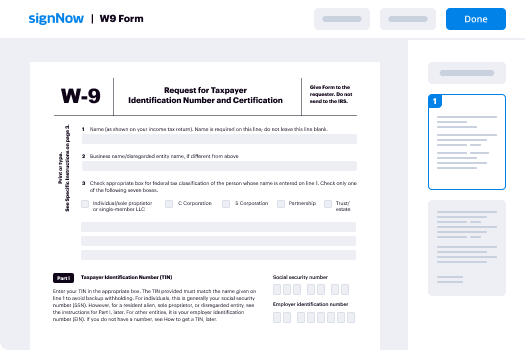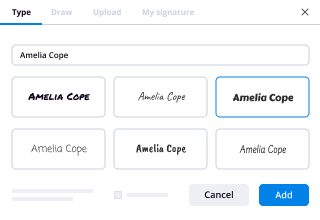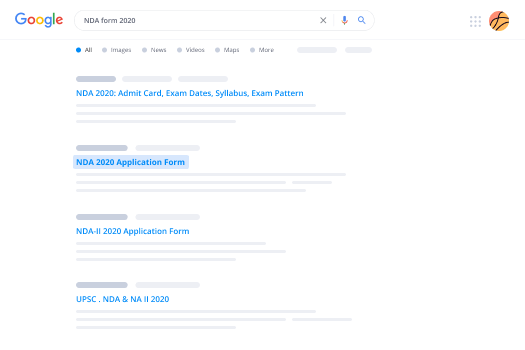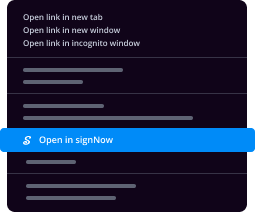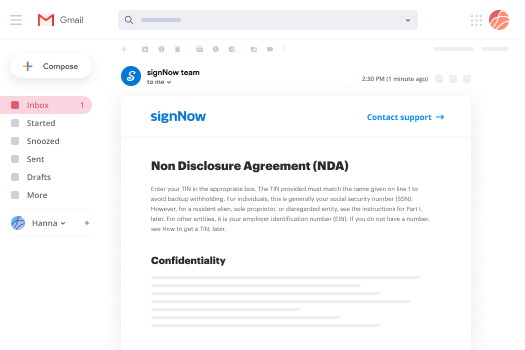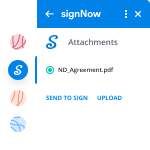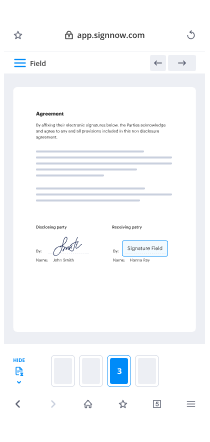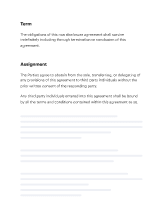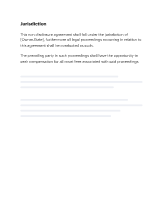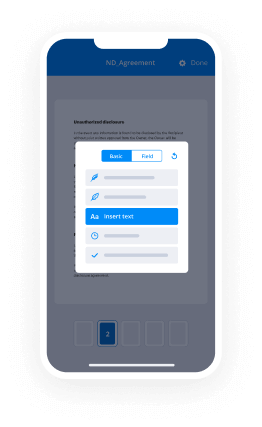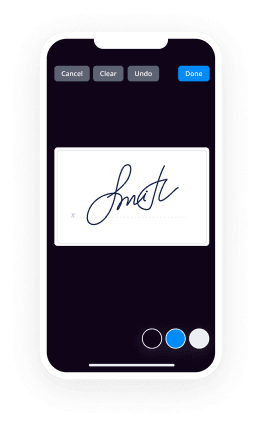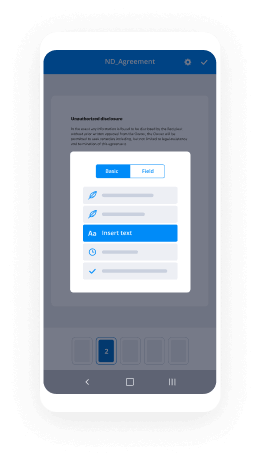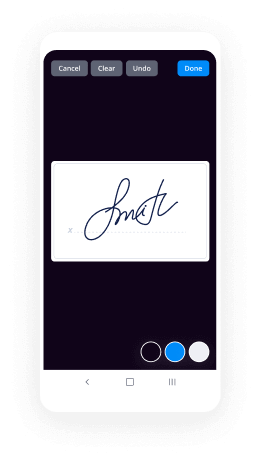Explorez La Signature En Ligne : Que Signifie Une Signature
- Démarrage rapide
- Facile à utiliser
- Support 24/7
Les entreprises qui pensent à l'avance dans le monde entier font confiance à airSlate pour le moment






Guide rapide : que signifie une signature
airSlate SignNow eSignature est une solution puissante pour simplifier la collecte de données, la négociation de contrats, l'interaction interne et externe, et rationaliser les procédures de prise de décision. Signer des documents électroniquement est facile pour les équipes, les partenaires et les clients, et cela aide votre entreprise à réduire le gaspillage de papier et les dépenses budgétaires inutiles.
Suivez les étapes ci-dessous et découvrez ce que signifie une signature :
- Ouvrez votre navigateur et accédez à signnow.com.
- Inscrivez-vous pour un essai gratuit ou connectez-vous en utilisant votre e-mail ou vos identifiants Google/Facebook.
- Cliquez sur Avatar de l'utilisateur -> Mon compte dans le coin supérieur droit de la page.
- Personnalisez votre Profil utilisateur en ajoutant des données personnelles et en ajustant les paramètres.
- Concevez et gérez votre (vos) Signature(s) par défaut.
- Retournez à la page du tableau de bord.
- Survolez le bouton Télécharger et créer et choisissez l'option appropriée.
- Cliquez sur l'option Préparer et envoyer à côté du titre du document.
- Entrez l'adresse e-mail et le nom de tous les signataires dans l'écran contextuel qui s'ouvre.
- Utilisez le menu Commencer à ajouter des champs pour commencer à modifier le fichier et à le signer vous-même.
- Cliquez sur ENREGISTRER ET INVITER une fois terminé.
- Continuez à personnaliser votre flux de travail eSignature en utilisant des fonctionnalités avancées.
Que signifie une signature est une excellente question et une à laquelle airSlate SignNow répond. Obtenez la fonction que vous et votre équipe recherchez pour ravir vos clients et partenaires dans la meilleure façon de gérer votre entreprise. Signez le premier contrat dès maintenant !
Comment ça marche
Évaluez votre expérience
What does a signature mean?
A signature is a personal mark or name that signifies agreement, consent, or approval on a document. In the context of electronic documents, a signature serves the same purpose as a handwritten one, confirming the signer's identity and intent. It is a crucial element in legal agreements, contracts, and various forms, ensuring that the parties involved acknowledge and accept the terms outlined in the document.
How to use the signature in electronic documents
Using a signature in electronic documents involves a straightforward process. First, you can upload the document you need to sign onto a digital platform like airSlate SignNow. Once uploaded, you can fill in any required fields before adding your signature. This can be done by drawing your signature, typing your name, or uploading an image of your handwritten signature. After signing, you can send the document for signature to other parties involved, ensuring a smooth and efficient workflow.
Legal use of signatures in the United States
In the United States, electronic signatures are legally recognized under the Electronic Signatures in Global and National Commerce (ESIGN) Act and the Uniform Electronic Transactions Act (UETA). These laws establish that electronic signatures hold the same legal weight as traditional handwritten signatures, provided they meet certain criteria. To ensure compliance, it is essential to use a reputable eSignature platform that adheres to these regulations, allowing for secure and valid electronic transactions.
Steps to complete and sign documents electronically
Completing and signing documents electronically can be done efficiently through a few simple steps:
- Upload the document to the eSignature platform.
- Fill out any necessary fields, such as names, dates, and other relevant information.
- Add your signature using the available options, such as drawing or typing.
- Review the document to ensure all information is correct.
- Send the document for signature to the required parties.
- Once all signatures are collected, download or store the completed document securely.
Key elements of a valid signature
A valid signature must include several key elements to ensure its authenticity and legality:
- Identity verification: The signer must be identifiable, often through email verification or other authentication methods.
- Intent: The signer must demonstrate clear intent to sign the document.
- Consent: All parties involved must consent to the use of electronic signatures.
- Integrity: The document must remain unchanged after the signature is applied, ensuring that the terms are not altered post-signing.
Security and compliance guidelines for electronic signatures
When using electronic signatures, it is important to follow security and compliance guidelines to protect sensitive information. This includes:
- Using a secure eSignature platform that encrypts data during transmission and storage.
- Implementing multi-factor authentication to verify the identity of signers.
- Maintaining a detailed audit trail that records all actions taken on the document, including when it was signed and by whom.
- Ensuring compliance with local and federal laws governing electronic signatures.
Obtenez dès maintenant des signatures juridiquement contraignantes !
-
Meilleur ROI. Nos clients obtiennent un ROI 7 fois en moyenne au cours des six premiers mois.
-
Échelle avec vos cas d'utilisation. De SMB à moyen marché, airSlate SignNow fournit des résultats pour les entreprises de toutes tailles.
-
Interface utilisateur intuitive et API. Signez et envoyez des documents depuis vos applications en quelques minutes.
Signature en ligne de la FAQ
-
What does a signature mean in the context of digital documents?
In the context of digital documents, a signature means a legally binding mark that indicates consent or approval. It serves as a confirmation that the signer agrees to the terms outlined in the document. Understanding what does a signature mean is crucial for ensuring the validity of electronic agreements. -
How does airSlate SignNow ensure the security of signatures?
airSlate SignNow employs advanced encryption and authentication methods to secure signatures. This ensures that the identity of the signer is verified and that the document remains tamper-proof. Knowing what does a signature mean in terms of security is essential for businesses handling sensitive information. -
What does a signature mean for contract validity?
A signature signifies that both parties have agreed to the terms of a contract, making it legally enforceable. In the digital realm, understanding what does a signature mean is vital for ensuring that agreements are upheld in a court of law. airSlate SignNow helps streamline this process with its eSigning capabilities. -
What features does airSlate SignNow offer for managing signatures?
airSlate SignNow offers features such as customizable templates, automated workflows, and real-time tracking of signatures. These tools simplify the signing process and enhance efficiency. Knowing what does a signature mean in this context helps users leverage these features effectively. -
How does pricing work for airSlate SignNow's eSigning services?
airSlate SignNow offers flexible pricing plans tailored to different business needs. Each plan includes various features, allowing users to choose based on their requirements. Understanding what does a signature mean in terms of cost can help businesses make informed decisions about their eSigning solutions. -
Can airSlate SignNow integrate with other software?
Yes, airSlate SignNow integrates seamlessly with various software applications, including CRM and document management systems. This enhances workflow efficiency and allows users to manage signatures within their existing tools. Knowing what does a signature mean in the context of integrations can optimize your business processes. -
What benefits does airSlate SignNow provide for businesses?
airSlate SignNow provides numerous benefits, including increased efficiency, reduced paper usage, and faster turnaround times for document signing. Understanding what does a signature mean for your business can help you appreciate the value of adopting an eSigning solution. It empowers teams to focus on core activities rather than administrative tasks.




















